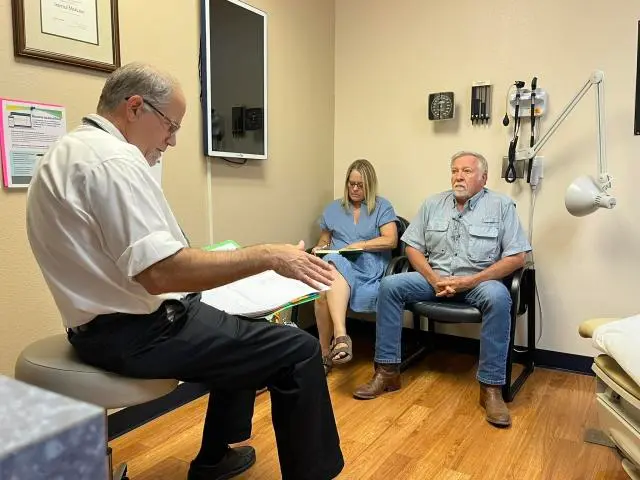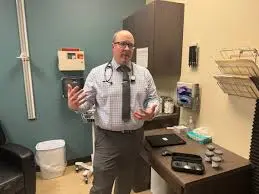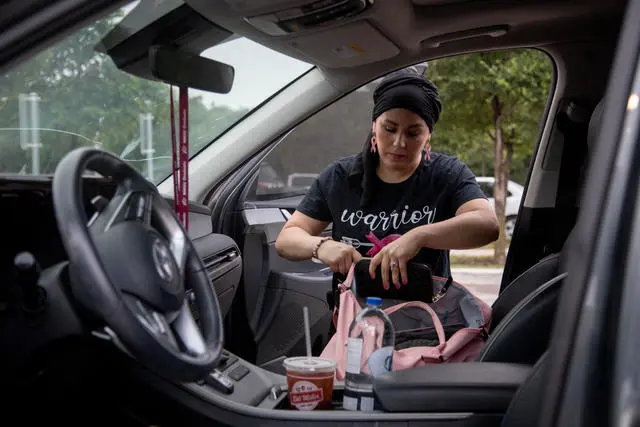Contents
- 1 A Costly Decision
- 2 Cancer Care Hospitals
- 3 “It numbs the area, so when I get to the infusion room the needle won’t hurt,” she said.
- 4 Exploring Solutions
- 5 Plus, travel can cost much more than filling the gas tank.
- 6 Patients on the Front Lines
- 7 But some patients are not daunted by long drives and travel costs.
- 8 Looking Ahead
A Costly Decision
In rural America, a growing number of small-town residents are facing a new, pressing challenge: dwindling access to cancer care. As financial pressures mount on rural hospitals, many are cutting back or even eliminating their oncology services, leaving patients with severe hurdles to overcome.
Cancer Care Hospitals

The night before her chemotherapy, Herlinda Sanchez sets out her clothes and checks that she has everything she needs: a blanket, medications, an iPad and chargers, a small Bible and rosary, fuzzy socks, and snacks for the road. After the 36-year-old was diagnosed with stage 3 breast cancer in December, she learned that there weren’t any cancer services in her community of Del Rio, a town of 35,000 near the Texas-Mexico border.
To get treatment, she and her husband, Manuel, must drive nearly three hours east to San Antonio. So they set an alarm for 4 a.m., which allows for just enough time to roll out of bed, brush their teeth, and begin the long drive navigating dark roads while watching for deer. About an hour before they arrive at the cancer clinic, the couple pulls over to quickly eat fast food in the car. The break gives Herlinda time to apply ointment on the port where the needle for her chemotherapy will be inserted.
“It numbs the area, so when I get to the infusion room the needle won’t hurt,” she said.

For rural patients, getting cancer treatment close to home has always been difficult. But in recent years, chemotherapy deserts have expanded across the United States, with 382 rural hospitals halting services from 2014 to 2022, according to a report published this spring by Chartis, a health analytics and consulting firm. Texas led that list, with 57 rural hospitals—nearly half of those statewide that had offered chemotherapy—cutting the service by 2022, according to the analysis. Rural hospitals in states like Texas, which hasn’t expanded Medicaid, have been more likely to close, according to data from the Cecil G. Sheps Center for Health Services Research.
To keep the doors open, financially strapped facilities in small communities nationwide continue to shed basic health care services, like obstetrics and chemotherapy, said Michael Topchik, executive director of the Chartis Center for Rural Health. “The data are staggering,” Topchik said. “Can you imagine feeling that sick and having to drive an hour in each direction, or maybe more in each direction, several times a week?”
Exploring Solutions
Addressing this issue requires a multifaceted approach. Policy changes at both state and federal levels could provide crucial support to rural hospitals, helping them maintain essential services. Financial incentives and targeted funding could help offset the costs of providing cancer care in underserved areas.

Expanding telemedicine services offers another potential solution, allowing patients to consult with specialists remotely and reducing the need for travel. Partnerships between rural hospitals and larger urban cancer centers could also facilitate better access to care, enabling smaller facilities to offer a wider range of services through collaboration.
Community support is also critical. Local organizations can provide transportation assistance, financial aid, and emotional support to help alleviate some of the burdens faced by rural cancer patients. Building stronger networks between rural and urban healthcare providers can help bridge the gap in care.
Loss of chemotherapy services can signal other gaps in cancer care, such as a shortage of local specialty physicians and nurses, which is bad news for patients, said Marquita Lewis-Thames, an assistant professor at Northwestern University in Chicago whose research covers rural cancer care. Rural patients are less likely to survive at least five years after a cancer diagnosis compared with their urban counterparts, concluded a study co-authored by Lewis-Thames and published in JAMA Network Open in 2022. While the rural-urban survival gap narrowed over the nearly 40 years researchers studied, the disparity persisted across most racial and ethnic groups, with only a few exceptions, she said.
Many cancer drugs are now given orally and can be taken at home, but some treatments for breast, colon, and other common cancers must still be administered intravenously inside a medical facility. Even distances of an hour or two each way can strain patients who already may be coping with nausea, diarrhea, and other side effects, physicians and patient advocates said.
“It’s pretty uncomfortable for some of these patients who may have bone metastases or have significant muscular pain and have to sit in the car that long and hit road bumps,” said Shivum Agarwal, a family physician who practices in rural communities an hour west of Fort Worth, Texas.
Plus, travel can cost much more than filling the gas tank.
“Usually it requires an able-bodied family member taking off a whole day or at least half a day from work,” Agarwal said. “So, there’s a big economic cost for the family. ” In this sense, the Sanchez family is fortunate. Herlinda’s mother drives four hours from Abilene to Del Rio to watch the couple’s youngest children, their 2-year-old twins.

Cancer infusions can last as long as eight hours on top of the travel time, causing significant financial and logistical challenges, said Erin Ercoline, executive director of the San Antonio-based Thrive Well Cancer Foundation. The nonprofit provides adult patients with financial assistance, including for gaps in insurance and transportation-related costs. It has helped cover gasoline for Sanchez, who received her final round of chemotherapy in late June. The financial assistance will also pay for her hotel when she travels for breast surgery in August.
Patients on the Front Lines
Not all rural hospitals are ending chemotherapy. Childress Regional Medical Center, a 39-bed hospital in West Texas, is constructing a 6,000-square-foot center for patients who need infusions for cancer and other diagnoses, including multiple sclerosis and rheumatology. The infusion area, which started with two chairs in 2013 and now has four, will grow to 10 chairs and have more patient privacy when it opens next year. The nearest infusion center in this sprawling region is an hour or more away, which discourages some patients from seeking care, said Childress’ CEO, Holly Holcomb.

“We’ve had a handful of patients say, ‘If you can’t do it here, I’m not doing it.'” Holcomb said. She credits the federal 340B drug discount program for enabling the remote hospital to provide infusion drugs.
Hospitals that qualify for 340B can buy outpatient drugs at steep discounts. The program provides “a huge kickstand for rural hospitals,” said Topchik of Chartis Center. Hospitals can use the savings to buoy or expand services provided to the community, he said.
But some patients are not daunted by long drives and travel costs.
“I’m from the country, so small is better—it’s just more personable,” said Dennis Woodward, 69, who lives in Woodson, Texas. He has a type of non-Hodgkin lymphoma and chooses to make a two-hour drive to Childress. He had first visited an oncology clinic in Abilene, about an hour away. The clinicians were nice, but “I felt like a number,” he said.
After his first appointment at Childress this year, his oncologist, Fred Hardwicke, walked him over to meet the nurses who would administer the medicine, Woodward recalled.
Most Fridays during Herlinda Sanchez’s chemotherapy, Manuel would nap in the car. But during her final treatment in June, he stayed nearby, counting down the hours.
Several family members joined Herlinda when she rang the bell later that afternoon to signal the end of her treatment.
“I don’t want to be in San Antonio any more,” said Herlinda, a mother of four who does administrative work at Laughlin Air Force Base near Del Rio. “I’m looking forward to the break.”
Looking Ahead
The challenge of maintaining cancer care in rural areas is significant, but it is not insurmountable. With collaborative efforts and innovative solutions, there is hope that all patients, regardless of where they live, can access the life-saving treatments they need. Ensuring that small-town residents do not have to choose between their community and their health is a crucial step toward achieving healthcare equity for all.
